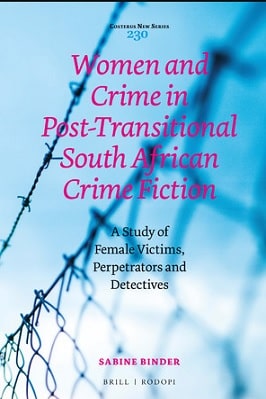
| Book Title | Women And Crime In Post Transitional South African Crime Fiction |
| Book Author | Sabine Binder |
| Total Pages | 252 |
| Book Views | |
| Language | English |
| Book Download | PDF Direct Download Link |
| Get Hardcover | Click for Hard Similar Copy from Amazon |
Women and Crime in Post Transitional South African Crime Fiction
A Study of Female Victims, Perpetrators and Detectives
By Sabine Binder
WOMEN AND CRIME IN POST TRANSITIONAL SOUTH AFRICAN CRIME FICTION
The Female Victim: Introduction
Crime novels are either narrative of investigators or narratives of criminals – rarely are they narratives of victims. While the murderer and, subsequently, the detective in some sense write their stories on the victim’s body, the victim, often conventionally female, seldom gets the chance to tell her story.
If she does, her tale risks being hijacked by the audience as a pornographic spectacle, especially if it is one of sexual violence (Du Toit 2005, 257– 258). Reading crime fiction through the lens of the female victim, thereby foregrounding her traumas as well as the potential for violence inherent in the representation of femaleness, is, therefore, a novel approach.
My analysis of the female victim is based on a selection of contemporary South African crime novels that not only give unusual prominence to the female victim but do so with a view to emphasising via fictional narration the real crimes that South African women suffer.
The authors thereby become the female victims’ advocates. I contend that, in so far as they give narrative shape to the female victim’s story, these crime novels can be read as trauma novels that function to testify to and process through fiction the trauma of past and present real violence against women.
At the same time, this fictional reworking of trauma constitutes a political act, as it exposes and revises – and at times reiterates – gendered and racial assumptions about women as victims, and of women’s suffering and its representation in a local, South African – as well as in a global, generic – context. This raises some important questions.
First, to what extent is it possible, within the generic frame of crime fiction and with a focus on the female victim – both as a dead body and as a survivor – to write against empirical gender violence?
Secondly, can this be done in ethical as well as gender- revisionist ways that do justice to the victim’s own trauma, in ways that have the potential to counterbalance the danger of sacrificing the female victim anew in the narrative? For possible strategies, if not answers, I will examine Finders Weepers (2014) by Penny Lorimer, Blessed Are the Dead (2012) by Malla Nunn and Margie Orford’s Clare Hart series. Before doing so, however, I will discuss the complexities inherent in
To read more about the Women And Crime In Post Transitional South African Crime Fiction book Click the download button below to get it for free
Report broken link
Support this Website
Click here to join our Telegram group for new Books